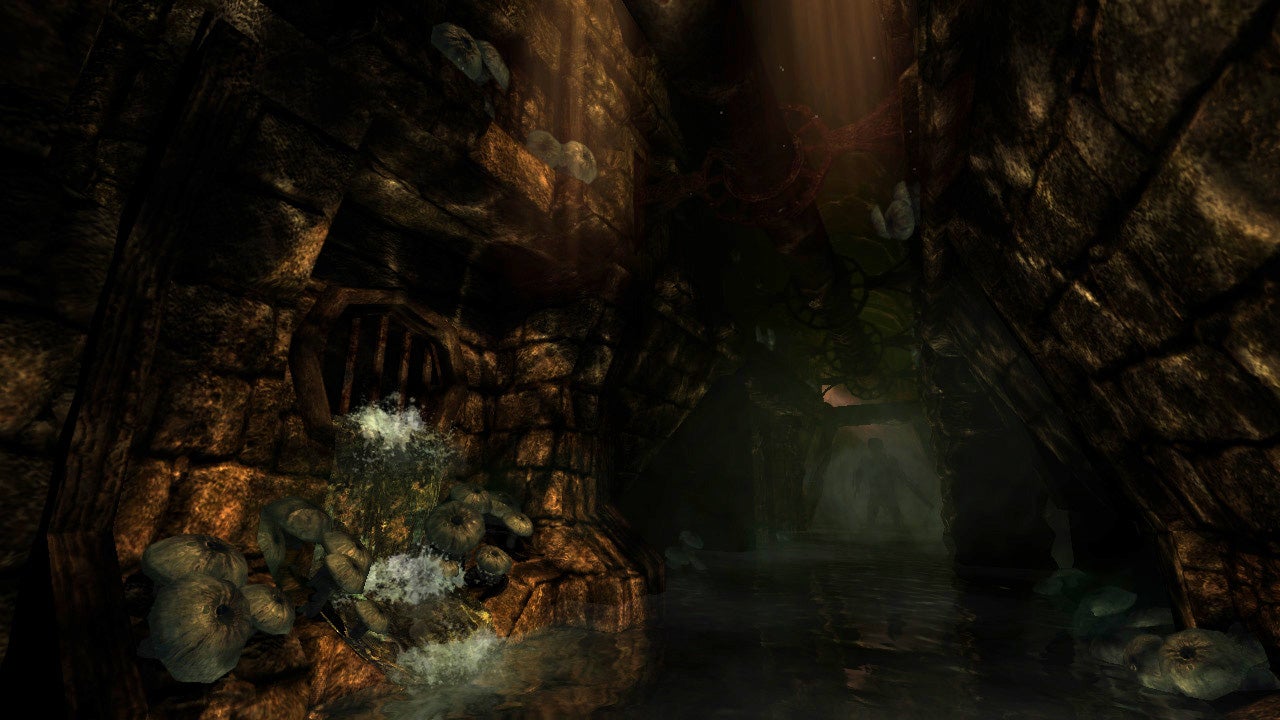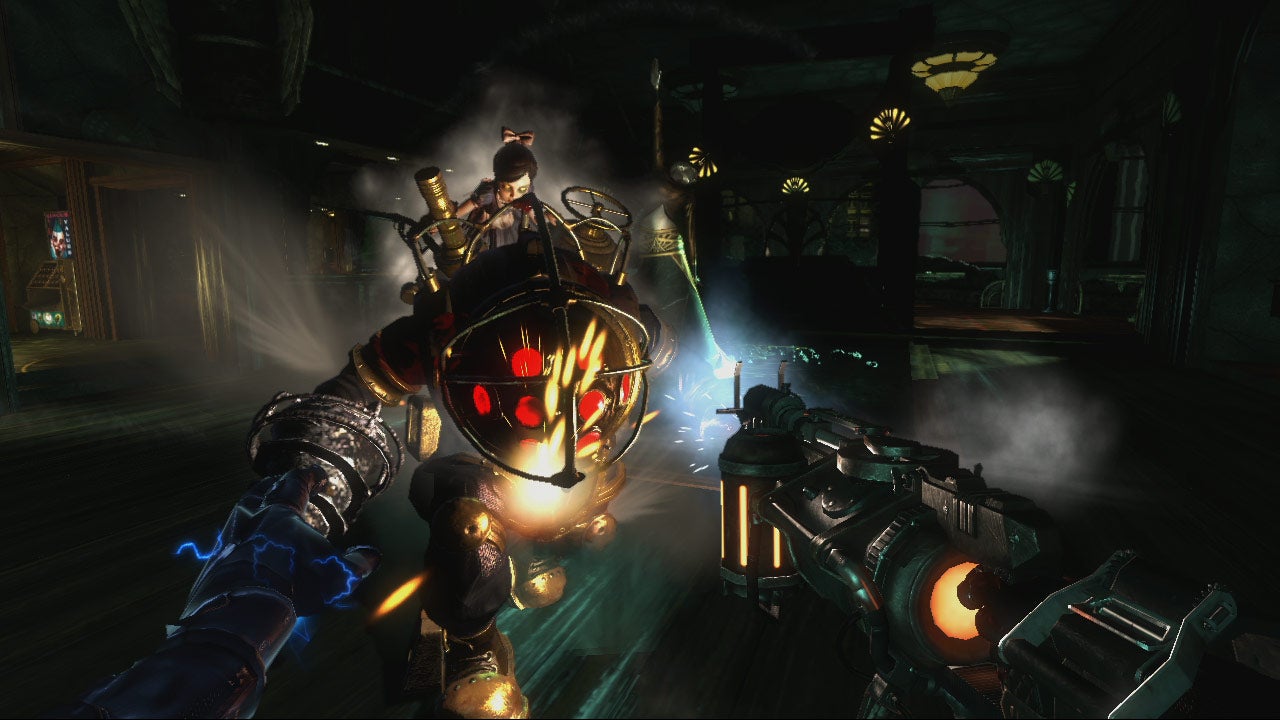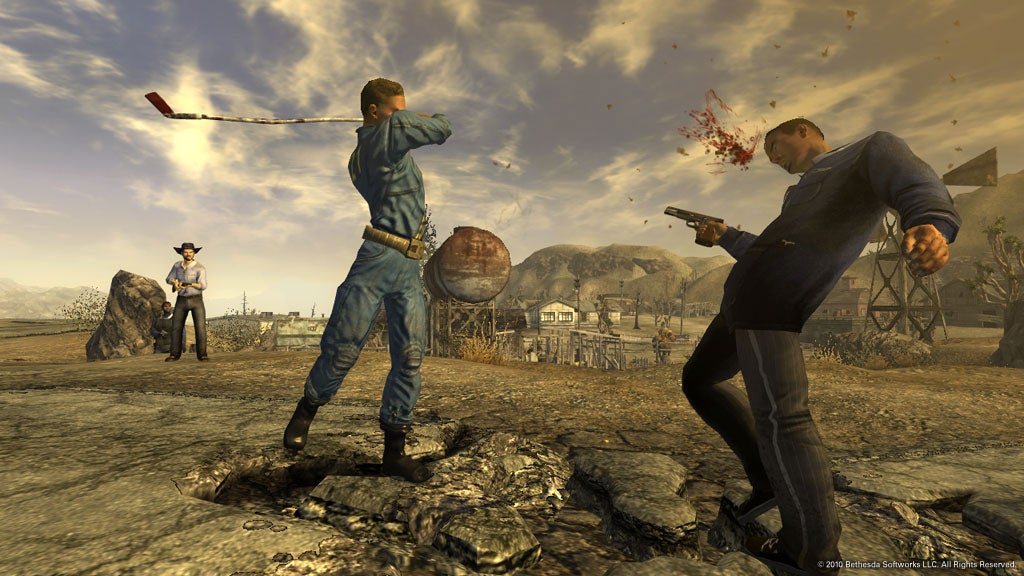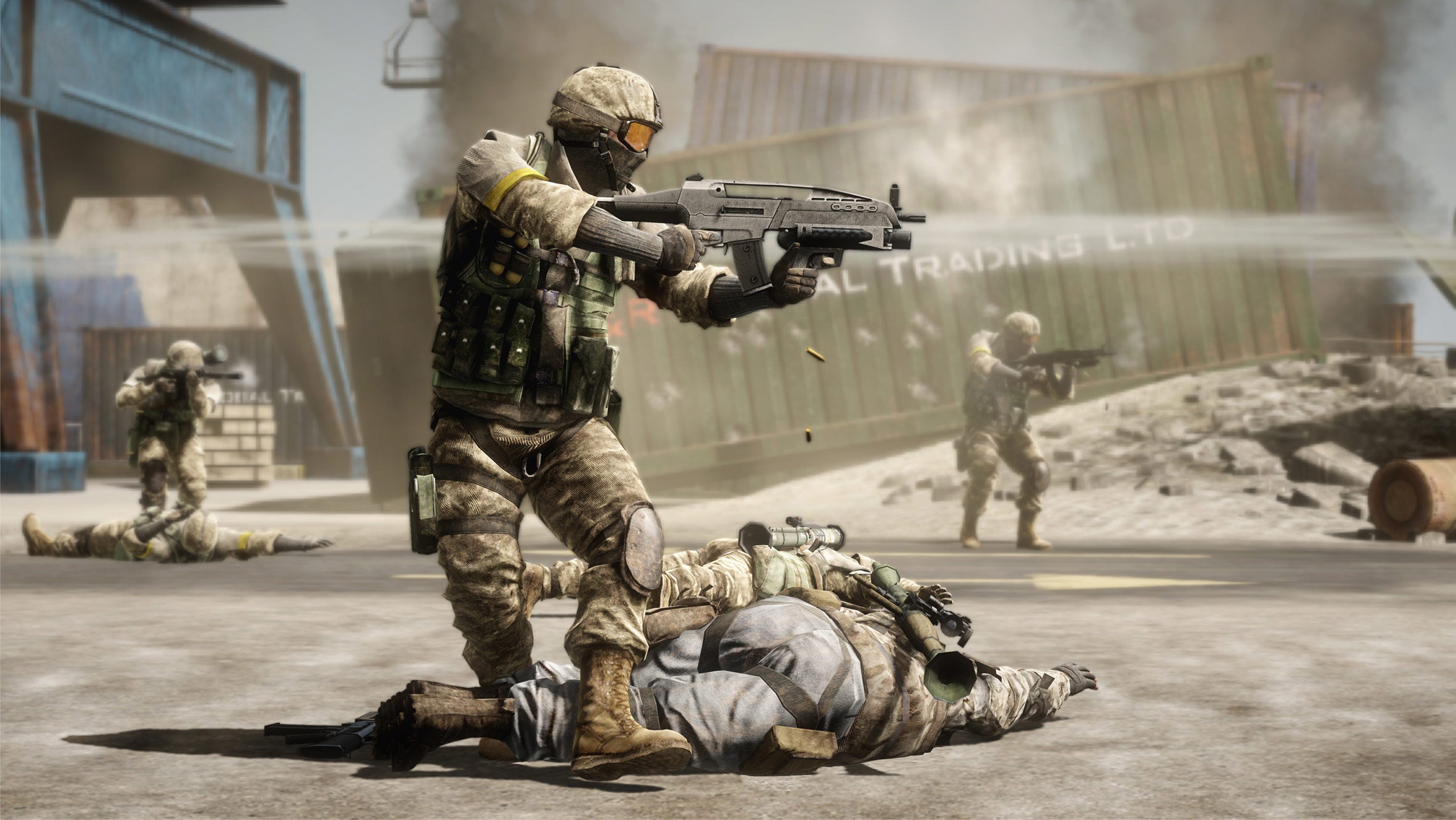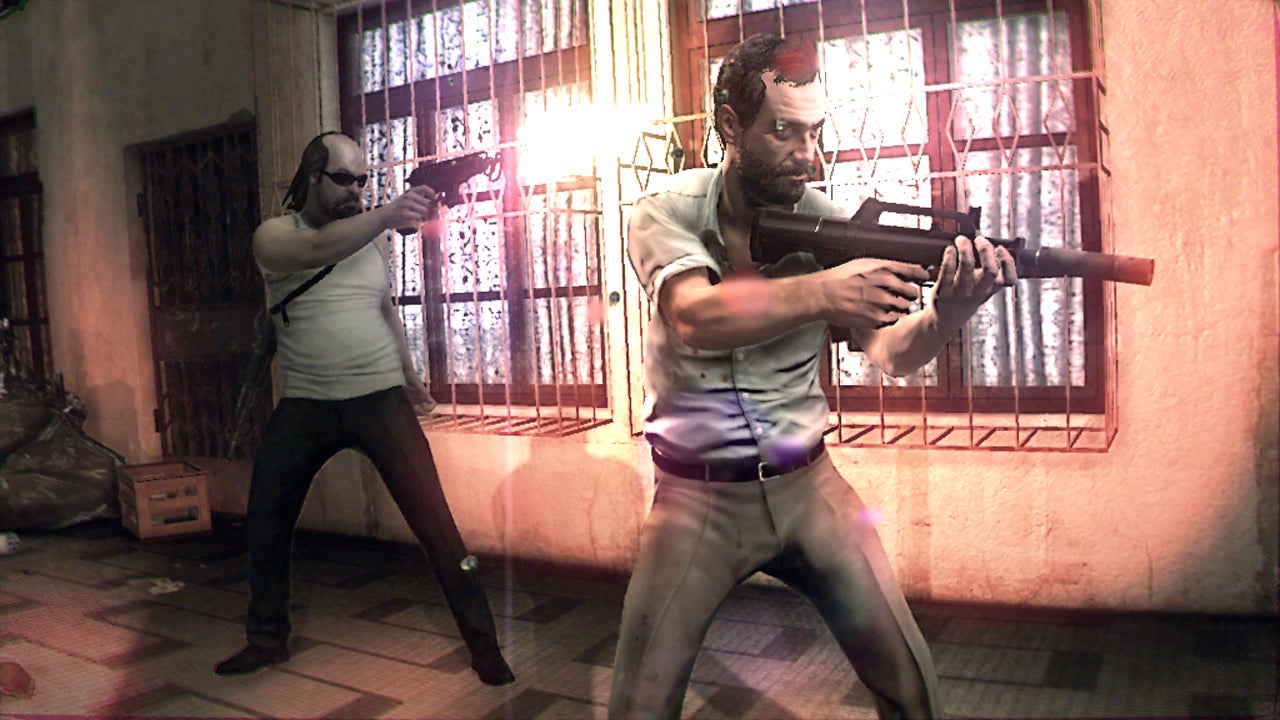Here are the rules: these Time Capsules are not intended to be a definitive list of best games from any given year. The games we pick are all personal favourites, but the key thing is that they’re all games we’d recommend people play today - and it’s this specific version of it they should play, too. If a game has been remade or remastered since its initial release, or had subsequent sequels, there would have to be a very good reason to preserve the original - like if the remaster made something patently worse, for example, or you have a Final Fantasy VII vs Final Fantasy VII Remake-type situation where you’ve clearly got two very distinct versions of game to pick from. For 2010, you’ll see a couple of games with newer remasters that have snuck on here, but as a rule we’ll be trying to avoid these types of picks going forward. As mentioned above, these games should also possess some defining quality that makes them worth saving, which we all go into detail about in our picks below. Think we’ve missed something important off the list? Tell us about the one game from 2010 you’d save from oblivion in the comments below.
Amnesia: The Dark Descent
Alice Bee: The pitch: you’ve woken up in a weird castle somewhere in Europe and you can’t remember who you are, or how you got there. The castle is full of lumbering monsters. You have to stay in or near light as much as possible, or your “I’m freaking out!!!” meter starts filling up. Figure out what’s going on, survive the monsters, and ultimately decide the fate of the big weirdo who owns the place. In execution, Amnesia has become one of the foundational texts for modern horror games, and cemented Frictional Games as a creative force to be reckoned with. And they’ve innovated since then; Amnesia: Rebirth came out in 2020 and rounded off the story that was started with the original, but with a new sense of grandeur and confidence. Some of it even takes place in bright sunlight, warning you to stay in the shade. Teehee. A lot of games call themselves psychological horror these days, but in practice that often just means that the developer heard of the Oedipal concept one time. Frictional Games are psychological in that they really grapple with deep fears – the dark, monsters hiding under the bed, being trapped forever, alone – at the same time as making your fear yourself. What are you? Who are you? What does ‘self’ even mean? 2015’s Soma really takes that concept and runs with it, and is one of my very favourite games of any genre. But arguably it’s Amnesia that has the standout sections you can never forget. We can’t deprive future generations the chance to be trapped in a flooded dungeon, leaping desperately from box to floating box, while unseen monsters thrash in the water…
BioShock 2
Rebecca: BioShock may be widely regarded as a stone-cold classic by this point, but you’ll find fewer people willing to extend that classification to its first follow-up, 2010’s imaginatively named BioShock 2. I’ve seen people suggest that new players to the franchise can safely skip this entry, and even 2K Games seem to lack faith in the sequel’s strengths, often choosing to gloss over what it contributed to the series’ lore in favour of BioShock Infinite. But I’d argue that, not only is BioShock 2 more than worthy of its proper place in the trilogy, in some ways it’s the best of the three. Remove BioShock 2 from the franchise’s overarching tale of dystopias grown out of different political / philosophical stances, and what you have is a broadly anti-right-wing narrative which — while I strongly agree with the sentiment — doesn’t quite do justice to what I think the series is really trying to get at in terms of its central theme. Namely, that any form of extremism going unchecked is detrimental to a functioning society. In this case, an autocratic leader who aligns with “kinder” beliefs is shown to still be doing a great deal of harm to her community, not only because power corrupts, but because a person who pursues such power in the first place is likely to have ulterior motives. This second game also, in my opinion, features many of the series’ most uplifting, if heartbreaking side-stories, with many characters choosing genuine selflessness in moments of crisis, a stark contrast to the antagonist’s ruthless pursuit of “the greater good” no matter the human cost. As the icing on the cake, BioShock 2 invites you to muse on all this while letting you dual wield your weapons and plasmids; something neither of the other BioShock games did, despite it being perhaps the most satisfying gameplay in the entire franchise. Hahaha, now who’s being corrupted by power?! Wait… this is what you’ve been trying to teach me all along isn’t it, BioShock?
Mass Effect 2
Ollie: When I loaded up Mass Effect 2 for the first time in the better part of a decade, the first thing I was greeted with was a little loading window that depicted all the major characters together. It was a small thing, but it instantly put paid to any concerns I had that the game might be showing its age a little too much to enjoy. Seeing that loading window was surprisingly like looking at an old school photo. Look! There’s Garrus, and Tali, and Thane, and Legion. There was Mordin in the background, taking up as little space as possible; and right next to him was Grunt, doing precisely the opposite. And, because no one gets along with everyone in school, there’s Jacob. They all actually felt like people that I had once had connections with, and I couldn’t wait to revisit and reforge those links. It was a reunion. Of course, once you step into Shepard’s shoes, there’s no denying that nowadays the original version of Mass Effect 2 (not the shinier Legendary Edition one) does show its age a bit. Back in 2010, its in-game cutscenes and cinematics were just about the best out there. Nowadays, we’re all used to modern cinematic marvels like Cyberpunk 2077, Red Dead Redemption 2, and The Witcher 3 - and if you’re coming from those games then Mass Effect 2’s feeling of immersion might not be quite up to the comparison. Similarly, the combat feels a little bland compared to today’s shooters - unless you’re using biotics to throw enemies around, which somehow feels as satisfying as ever. But those things aren’t why you should play Mass Effect 2 today. You should play it because it’s still the best space opera in gaming, thanks to its awe-inspiring soundtrack, its surprising and ambitious plot, and of course its brilliantly designed, written, and voice-acted characters. Combined, these three things represent the nucleus of the entire trilogy, bulging with enough protons to cancel out the negativity from the occasional electrons that surround it. And Mass Effect 2 is the peak of the series, a thrilling, powerful, nuanced tale about assembling a band of elite soldiers, earning their trust, and embarking on a suicide mission to save the galaxy. I think everyone should play it at least once.
VVVVVV
Katharine: 2010 was an incredible time for brutal indie platformers. It was the year Super Meat Boy first bounced and bled onto the scene, and Limbo began haunting the Xbox Live Arcade ahead of its big PC release a year later. But let’s face it. Jumping is soooo 2009. Where we’re going, it’s all about letting gravity do the hard work for us, flip-flopping up and down like a tiny space yo-yo as we try not to repeatedly impale ourselves on sharp spikes and other interdimensional nasties as we work to save our stranded crewmates. I am also a firm believer that future generations should be subjected to the same conundrums we faced with Terry Cavanagh’s VVVVVV, and that’s: is it pronounced “Vee-vee-vee-vee-vee-vee”? Or just “Veeeeeeeeeeeeeee”? In all seriousness, though, VVVVVV remains as refreshing and invigorating to play today as it did in 2010. Yes, gravity-switching may have become the standard things that all the cool kid platformers do for a spell these days, but I’d argue that a lot of these modern interpretations can probably be traced back to the 400+ puzzle rooms of this retro classic. The sheer inventiveness of VVVVVV’s gravity gauntlets is unmatched in my opinion, and just when you think you’ve seen it all, it goes and chucks another curveball at you and smacks your expectations right in the teeth. It’s also an important lesson in the art of checkpointing. Many games have benefitted from its wise decision to include almost room-by-room save points and instantaneous respawns over the years, and this is important knowledge that simply cannot be lost to the annuls of history. Neither should its toe-tapping soundtrack for that matter. Or its Sad Elephant. Every game needs its own Sad Elephant.
Fallout: New Vegas
James: Anyone who’s visited a museum and noticed all the statues’ missing hands, noses and todgers will know two things. One, something can be a work of art even if it’s a bit broken, and two, preserving such delicate works can take some effort. Fallout: New Vegas is another example – running it on PC without constant crashes, or a high FPS sending the physics engine into overdrive, demands a veritable armoury of mods and DIY bug fixes. People of the future, I hope you still have Nexus Mods. And yet, despite being a technical disasterclass, New Vegas is worth both preserving and persevering with. Of all the modern Fallouts, it’s unsurpassed in charm, with a committed (but not overcooked) Western theme and stellar scriptwriting that leaves even the most hateful villains able to hold a thought-provoking chat. And while not truly sprawling, the Mojave Wasteland is the backdrop to some of the series’ best sidequests, from the creeping horror of Vault 11 to an undercover mission exposing a casino’s cannibal concierge. Credit also goes to the four main expansions – Dead Money, Honest Hearts, Old World Blues and Lonesome Road. Not just being tonally and mechanically distinct adventures in their own right, but for their masterful building of an overarching story that begins with mere lore-crumbs in the base game and ends with the highest of high-stakes showdowns. That you can, this being New Vegas, win by talking smart.
Battlefield: Bad Company 2
Ed: Battlefield games are all about scale nowadays. How many players can smush into a lobby? At first it was 64, now it’s 128. And even if they’re not cranking up the dial with each release, you get the feeling that this is the ultimate aim. A Battlefield 2077 set in Night City – no, a cyberpunk universe. It has 256 player lobbies; cyborgs with laser eyes; Levolution Plus! Sunken volcanoes can erupt at any time, which causes an earthquake, which causes a tsunami, which floods maps. Tremors can be felt in other players’ lobbies. They exist simultaneously, you see. Battlefield Bad Company 2 keeps things simple. Not that previous entries hadn’t, it’s just that BC2 gets it so right. Planes were ditched and maps were made smaller, but it made up for its downsizing with excellent map design. The dark forests of Nelson Bay funnel you into desperate pushes over mounds of snow. Valparaiso sees you snake across the coast, tearing through towns and dipping back into jungle. Harvest Day has you chew through quaint homes with RPGs. Bad Company 2 deserves its place in the RPS cryochamber because it’s a relic of a Battlefield that we may never see again. One that was intimate and funny, with destruction that actually felt destructive. Those smaller maps made smashing through brick all the more intense. Not to mention that it had a decent single-player campaign. I hope that one day DICE pries open this cold casket and sees BC2 as their next step forwards.
Kane & Lynch 2: Dog Days
Alice0: Kane & Lynch 2 is an ugly and unpleasant third-person cover shooter with a story about two fuck-up murderers who keep fucking up and whose only plan to escape the clusterfuck is to aggressively fuck up in a forwards direction. It’s great. Some highlights: the guns are bad, it looks ugly, and its anti-heroes are just arseholes. The starting weapons suck. Oh sure, loads of shooters give fancier weapons towards the end, but the guns you’ll find at the start of K&L2 are truly terrible. You’ll often struggle to kill someone ten metres away, spraying bullets everywhere but their flesh, and need to charge forwards to hit them. Even when you do get a semi-decent gun, ammunition is limited enough that you’ll soon need to ditch it and grab a new gun from a fallen foe. Early levels are full of dangerously pushing forwards to get into range of your enemies while desperately seeking a new gun, any gun, just a gun off the floor with any bullets in it. Wonderful, though sadly undercut by getting good guns towards the end. The look holds up strong. Kane & Lynch 2 is presented like video filmed on a phone or cheap camera then uploaded to an streaming video site. Colours are over-exposed, lines from a scratched lens spread across lights, surfaces are murky patchworks of blocky compression artifacts, nudity is obscured with pixellation, phone calls cause that beepity-beep-bip noise, and even the loading bar is a buffering dial. Camera angles are usually wonky, get all sorts of shaky when you sprint, then in cutscenes sometimes go still as if someone has temporarily set the camera down. It sets out to be aggressively ugly and nails it. It’s unpleasant overall. Like, really unpleasant. A terrible story about terrible people doing terrible things and suffering terrible things. Even our stars are awful, having some shred of humanity but hurting everyone around them because they act without thought and don’t know how to be anything other than what they are. It’s one of those relentlessly grim action films, a genre I’m often not mad keen on, but yeah, I like it here. Any 2010 time capsule needs a cover shooter, and this is the one my mind wanders back to most. I mean, other than Platinum’s Vanquish, but that didn’t hit hit PC until years later so it couldn’t be in our time capsule. And! You can play the campaign with a pal in cooperative multiplayer. Bonus.
Call Of Duty: Black Ops
Hayden: If I could see some big chart of my zombies playtime across each Call Of Duty game, I imagine it’d be rather frontloaded. World At War kicked it off, but Black Ops 1 is where the mode really took shape. It had simple maps that were fun to play while chasing high rounds and multi-stage easter eggs that were both exciting and accessible, even for nine-year-old me. Black Ops 2 tried its best to retain that formula, and then things got messy. In recent years, poorly designed maps, endless gimmicks, and increasingly-convoluted puzzles have plagued COD zombies. I think it was around the release of Black Ops 3’s Zetsubou No Shima DLC map that I dropped off almost entirely, and I’ve barely played the new stuff since. I always give them a go and very promptly announce “I just wish they’d go back to Black Ops 1-style zombies”. So, here I am saying it again. Black Ops 1 was the peak of zombies, and I miss it dearly. Of course, Black Ops 1 had plenty of other lovely bits that deserve a mention. The campaign is one of COD’s best storylines, with a CIA mystery connected to World At War that was a joy to uncover. THE NUMBERS, MASON. Classic. Speaking of classics, I think Nuketown has become so ingrained in Call Of Duty that we might just see it reappear every few years until the end of time. If someone isn’t waiting for the heat death of the universe while playing a few rounds of TDM on Nuketown 20,000,025, then I’d be shocked. Add in other iconic maps that perfected the 3-lane design, such as Summit, Jungle and Firing Range, and you can see why Black Ops multiplayer was so special. Whenever I speak about Call Of Duty, I always wish it could recapture the magic. Sometimes they manage it with one or two elements of the game, but they never seem to nail it across the board. Black Ops 1 is a shining example of that magic, with every mode reaching heights that we’ve not seen since.
But what about you, dear reader? What game would you save from 2010 to put in a time capsule? And what year would you like to see us visit next? Tell us in the comments below.
